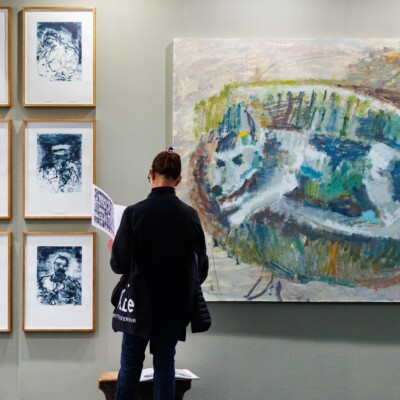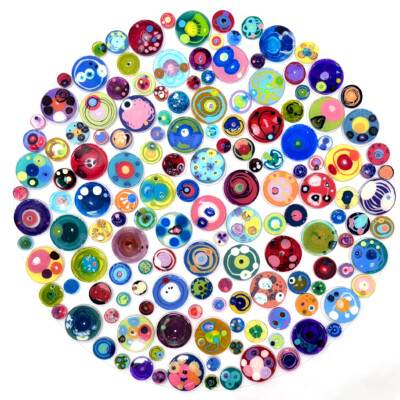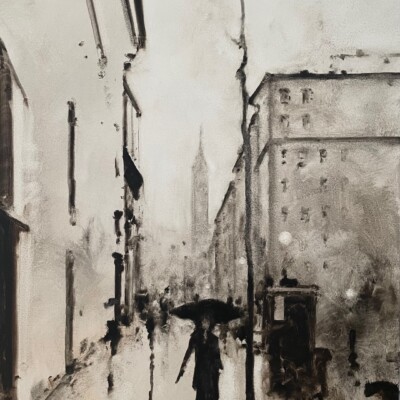SPRING/BREAK Art Show is an internationally recognized exhibition platform using underused, atypical and historic New York City exhibition spaces to activate and challenge the traditional cultural landscape of the art market, typically but not exclusively during Armory Arts Week. This year the fair returns for its 10th edition in NYC located at 625 Madison Avenue between 58th and 59th Streets for the second time, specifically to unveil the exhibition HEARSAY:HERESY. The show runs September 8th to September 13th, 2021.
The Association of Women Art Dealers is pleased to share that two member galleries are participating – Abigail Ogilvy Gallery and The Villa Americana Fine Art.
The Abigail Ogilvy Gallery, booth 1021, features a solo presentation of Haley Wood’s artwork Woad. Though a contemporary artist Haley Wood is a medieval storyteller at heart. Finding inspiration in medieval marginalia, folklore, and all living creatures that display a great deal of personality, Wood relishes in the challenge of conveying complex emotions with a simple facial expression. Her desire is for each of her pieces to tell a story to the viewer, whether it consists of multiple panels or a singular surface.
Her most recent body of work, Wood/Woad, is a twelve-page story inspired by her relationship with her grandmother Mathilde, who suffered from dementia in her later years of life. The story takes place in a settlement of quasi-medieval hares. Elisabet is the dyer in her village, primarily working with woad. Over the course of a year, Elisabet’s focus shifts from her dyework to caring for her ageing Ancestor, and the acceptance of the inevitable.

The Villa America Fine Art, at booth 1157, presents painter Marguerite Wibaux’s HORROR VACUI curated by Susan Nelly. The exhibition features content that questions the representation of female identity in an age of superficiality, selfies and shared hearsay. It plays with the conflicting injunctions that are laid upon women — how readily the female user is slut-shamed even though the algorithm rewards hyper-sexualized imagery. It underlines the difficulty of defining one’ own identity when it comes – incorporating and integrating both a woman’s social and intimate images of herself. In doing so, it also uses paint to play with the pathways from historic iconic imagery to today’s mediasphere.





